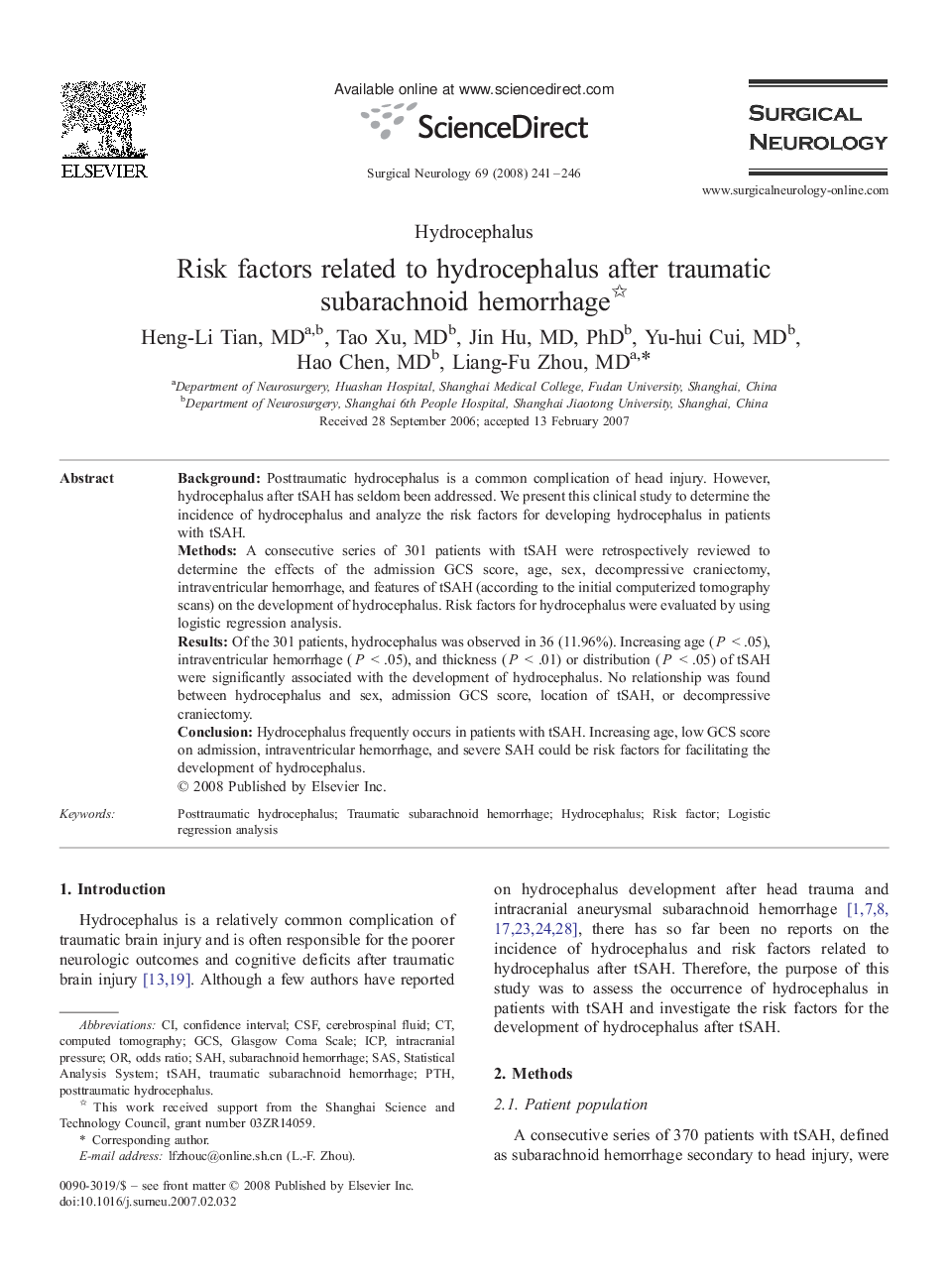| کد مقاله | کد نشریه | سال انتشار | مقاله انگلیسی | نسخه تمام متن |
|---|---|---|---|---|
| 3093172 | 1190531 | 2008 | 6 صفحه PDF | دانلود رایگان |

BackgroundPosttraumatic hydrocephalus is a common complication of head injury. However, hydrocephalus after tSAH has seldom been addressed. We present this clinical study to determine the incidence of hydrocephalus and analyze the risk factors for developing hydrocephalus in patients with tSAH.MethodsA consecutive series of 301 patients with tSAH were retrospectively reviewed to determine the effects of the admission GCS score, age, sex, decompressive craniectomy, intraventricular hemorrhage, and features of tSAH (according to the initial computerized tomography scans) on the development of hydrocephalus. Risk factors for hydrocephalus were evaluated by using logistic regression analysis.ResultsOf the 301 patients, hydrocephalus was observed in 36 (11.96%). Increasing age (P < .05), intraventricular hemorrhage (P < .05), and thickness (P < .01) or distribution (P < .05) of tSAH were significantly associated with the development of hydrocephalus. No relationship was found between hydrocephalus and sex, admission GCS score, location of tSAH, or decompressive craniectomy.ConclusionHydrocephalus frequently occurs in patients with tSAH. Increasing age, low GCS score on admission, intraventricular hemorrhage, and severe SAH could be risk factors for facilitating the development of hydrocephalus.
Journal: Surgical Neurology - Volume 69, Issue 3, March 2008, Pages 241–246